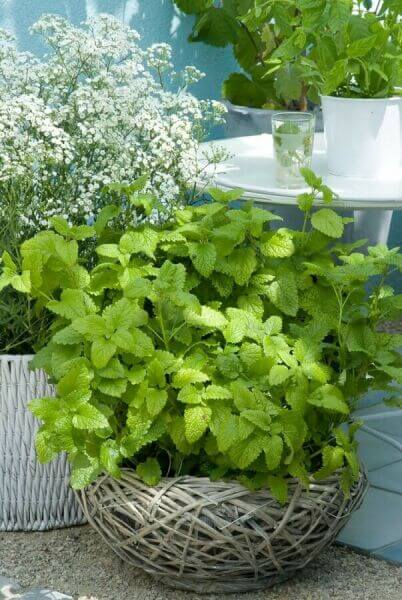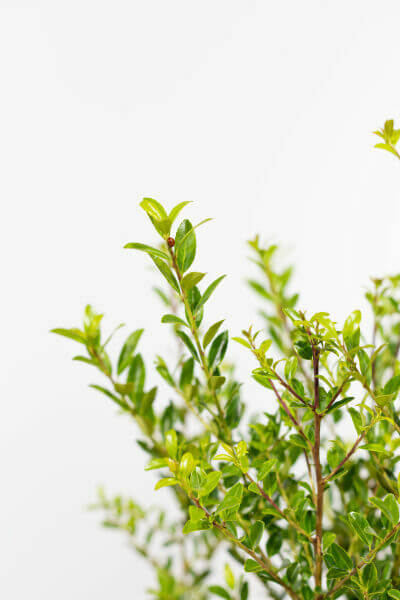Hedge Plants For Courtyard Gardens
Hedge Plants For Courtyard Gardens
Blog Article
Best Hedging Plants For All Seasons
Enhance your garden's allure with lush hedge ranges such as Yew (Taxus), Thuja, Laurel, Photinia, and Bamboo, commemorated for their structural integrity and environmental advantages.
Yew and Thuja offer evergreen coverage and winter season durability, while Laurel offers quick growth and broad, fragrant leaves.
Photinia includes seasonal charm with its dynamic red foliage, and Bamboo provides a low-maintenance, serene ambiance.
These hedges improve air quality, lower noise, and produce tranquil, personal spaces.
Appropriate planting, spacing, and upkeep make sure vigorous growth and eco-friendly harmony.
Explore how these rich ranges can raise your garden's appeal and well-being.
Key Takeaways
Transform Your Garden With Lush Hedge Ranges
- Select Yew for its thick, evergreen development and unparalleled longevity.
- Select Laurel for its quick development and broad leaves, making sure quick privacy.
- Choose Photinia for its vibrant seasonal foliage, which turns a striking dark red.
- Use Bamboo for a low-maintenance, winter-hardy hedge with aesthetic appeal.
- Area plants 2-3 per meter and prune frequently for optimum development and health.
Popular Hedge Plants
When changing a garden with lavish hedge ranges, it's important to think about popular hedge plants such as Yew, Thuja, Laurel, and Photinia due to their special characteristics and benefits.
Yew (Taxus) is extremely respected for its durability and thick, green development, making it a prime option for withstanding landscapes.
Thuja is kept in mind for its evergreen foliage and robust winter durability.
Photinia adds seasonal vibrancy with red leaves that darken in time, producing dynamic visual appeal.
Laurel offers rapid growth and aromatic, broad leaves, perfect for fast personal privacy.
Furthermore, Bamboo is an outstanding choice for ambiance, using a low-maintenance, winter-hardy alternative that improves the garden's aesthetic with its classy, swaying walking sticks.
These choices accommodate a variety of horticultural needs and choices.
Benefits of Garden Hedges
Garden hedges offer a multitude of advantages, making them an important addition to any landscape. These natural barriers are affordable to implement and supply considerable wind security, enhancing air blood circulation and contributing to noise decrease. The dense foliage of hedges like Thuja and Beech ensures personal privacy by obstructing presence, producing a serene and remote environment.
Hedges also play a crucial function in microclimate regulation, supplying a stable environment that cultivates plant growth and decreases temperature variations. Their elaborate leaf structures filter pollutants, improving air quality and adding to a healthier garden environment.
Moreover, hedges master noise decrease, absorbing and deflecting sound waves to lower ambient sound levels. This dual performance of supplying both visual and acoustic personal privacy enhances the general harmony and aesthetic appeal of any garden.
Planting and Upkeep Tips
For a successful hedge, meticulous preparation of the planting location is vital. Guarantee the soil has proper pH and drainage to support strong root development.
Area the plants appropriately for the chosen types. Water the hedge frequently throughout its initial growth phase, adjusting as required with seasonal changes.
Carry out a organized pest control and disease prevention method, utilizing organic or chemical treatments when necessary. Routinely check for aphids, termites, and fungal infections.
Apply mulch to retain moisture and suppress weeds. Seasonal pruning promotes dense development and air blood circulation, necessary for plant health.
Following these guidelines will help you cultivate a vibrant, well-kept hedge that improves the appeal of your garden.
Spacing and Cutting Standards
Spacing and Cutting Standards
Correct spacing and cutting are crucial for cultivating healthy, visually appealing hedges. Adequate spacing ensures each plant receives sufficient nutrients, light, and airflow.
Follow these standards for optimum hedge upkeep:
- Spacing: Position hedge plants 2-3 plants per meter to motivate robust development.
- Pruning Strategies: Routine pruning is vital for preserving preferred hedge height and shape. Trim new growth in summer and cut down older wood throughout winter season.
- Seasonal Care: Adjust trimming approaches and schedules according to seasonal requirements to make sure plant health.
- Hedge Height: Frequently screen and trim to maintain the wanted hedge height and accomplish uniform visual appeals.
Abiding by these steps will ensure your hedge grows, improving both the appeal and functionality of your garden.
Choosing the Right Hedge
Selecting the Right Hedge
Picking the proper hedge includes assessing elements such as mature height, foliage density, and ecological durability. Successful hedge plant choice requires understanding each types' growth attributes and site-specific versatility.
For example, Yew (Taxus) uses outstanding durability and thick growth, while Thuja is noteworthy for its winter strength. Browse around this site Additionally, thinking about maintenance requirements is vital; fast-growing species like Laurel or Privet need regular cutting, whereas low-maintenance options like Bamboo or Ivy may be more suitable for those seeking minimal maintenance.
Environmental aspects such as soil type, light availability, and wetness conditions should likewise assist the selection procedure. This mindful approach ensures the chosen hedges will thrive, providing both aesthetic and functional benefits to the garden landscape.
Delivery and Planting Advice
To guarantee your hedge plants prosper, they need to be delivered by specialized carriers and planted immediately upon arrival.
Follow these essential actions for effective planting:
- Soil Preparation: Enrich the soil with raw material to enhance drain and nutrient content.
- Planting Depth: Produce a trench two times the width and equal to the depth of the root ball.
- Watering Techniques: Water thoroughly after planting, keeping the soil regularly moist however not filled.
- Mulching: Use a layer of mulch to retain wetness and suppress weeds.
Consumer Assistance and Service
Given the essential function of prompt assistance in horticultural pursuits, our client assistance group is readily available 6 days a week through telephone, e-mail, and social media to offer professional recommendations and promptly resolve any issues. Their devotion to fast action times makes sure consumer fulfillment by dealing with inquiries connected to plant health, optimum planting approaches, and upkeep schedules.

Reaction Time
-------------------
Within 24 hours
This comprehensive support group, strengthened by an outstanding 9.3/ 10 consumer ranking, highlights our dedication to enhancing the gardening experience for every client.
Frequently Asked Questions
For How Long Does It Take for Hedge Plants to Establish?
Hedge plants normally need one to 3 years to end up being fully established, with the exact duration varying by species and growing conditions.
Effective care throughout this important period is important for robust development. Constant watering, watchful weed control, and suitable fertilizer application are pivotal in promoting strong root advancement.
For instance, fast-growing species like Laurel might establish quicker, while slower-growing varieties such as Yew may take longer. Persistent maintenance speeds up the establishment procedure, resulting in healthy and dense hedges.
What Are the very best Hedge Plants for Personal Privacy?
The question of the best hedge plants for personal privacy involves examining evergreen and deciduous choices.
Evergreen hedges like Thuja, Laurel, and Cypress offer year-round coverage, guaranteeing continuous personal privacy.
On the other hand, deciduous hedges such as Beech provide seasonal privacy, shedding leaves in colder months.
Key maintenance ideas for personal privacy hedges consist of routine trimming, fertilizing in spring, and proper spacing-- normally 2 to 3 plants per meter.
In addition, constant watering and diligent weed elimination are important for promoting healthy, thick development.
Can Hedge Plants Attract Wildlife to My Garden?
Yes, hedge plants can bring in wildlife to your garden by offering essential advantages like shelter, food, and nesting websites, thus enhancing local biodiversity. For circumstances, yew, holly, and laurel are outstanding for bring in birds, while ivy supports a range of insects.
Nevertheless, it's important to keep in mind that there are some drawbacks, such as increased upkeep to manage insects and routine upkeep. Thoroughly choosing and keeping hedge varieties can assist stabilize these downsides and advantages, eventually fostering a sustainable and dynamic environment in your garden.
Are There Any Blooming Hedge Plants Available?
Yes, there are flowering hedge plants offered that can boost the beauty of your garden.
For instance, Elaeagnus, also referred to as Olive Willow, produces aromatic white flowers in the fall, adding a touch of elegance.
Photinia, another popular option, showcases lively red leaves that mature into a rich green, producing a vibrant visual result throughout the seasons.
To ensure these plants grow, it's important to practice appropriate pruning strategies and seasonal upkeep, such as cutting new growth in the summertime and cutting down in the winter season.
These procedures will assist keep the health and aesthetic appeal of your flowering hedges.
How Do I Prevent Pests in My Hedge Plants?
To prevent insects in hedge plants, utilize natural insect control techniques and maintain appropriate hedge care. Present helpful pests like ladybugs, which victimize harmful pests, to create a balanced community.
Routinely examine your hedges for signs of infestation and quickly remove any affected parts to prevent the spread. Ensure the health of your hedges by using well balanced fertilizers and supplying appropriate water.
Make use of mulching to keep soil moisture and proper spacing to decrease plant stress and promote robust development. These practices jointly assist in lessening insect problems and maintaining a healthy hedge.
Conclusion
In essence, choosing the best hedge varieties such as Yew, Thuja, and Laurel can transform any garden into a peaceful haven. These plants supply year-round plant, improve aesthetic appeal, and deal practical benefits like sound decrease and wind protection.
Correct planting strategies, accurate spacing, constant watering, and seasonal cutting are important for optimum development.
Trustworthy delivery services and skilled client assistance guarantee a seamless experience from purchase to planting, making it easier than ever to elevate your outside space.
Garden hedges offer a wide variety of advantages, making them an important addition to any landscape. These natural barriers are cost-effective to implement and provide substantial wind security, enhancing air blood circulation and contributing to noise decrease. The dense foliage of hedges like Thuja and Beech makes sure privacy by blocking visibility, producing a serene and remote environment.

Pruning Techniques: Regular pruning is essential for keeping preferred hedge height and shape. Trim brand-new development in summer and cut back older wood throughout winter season.
Report this page